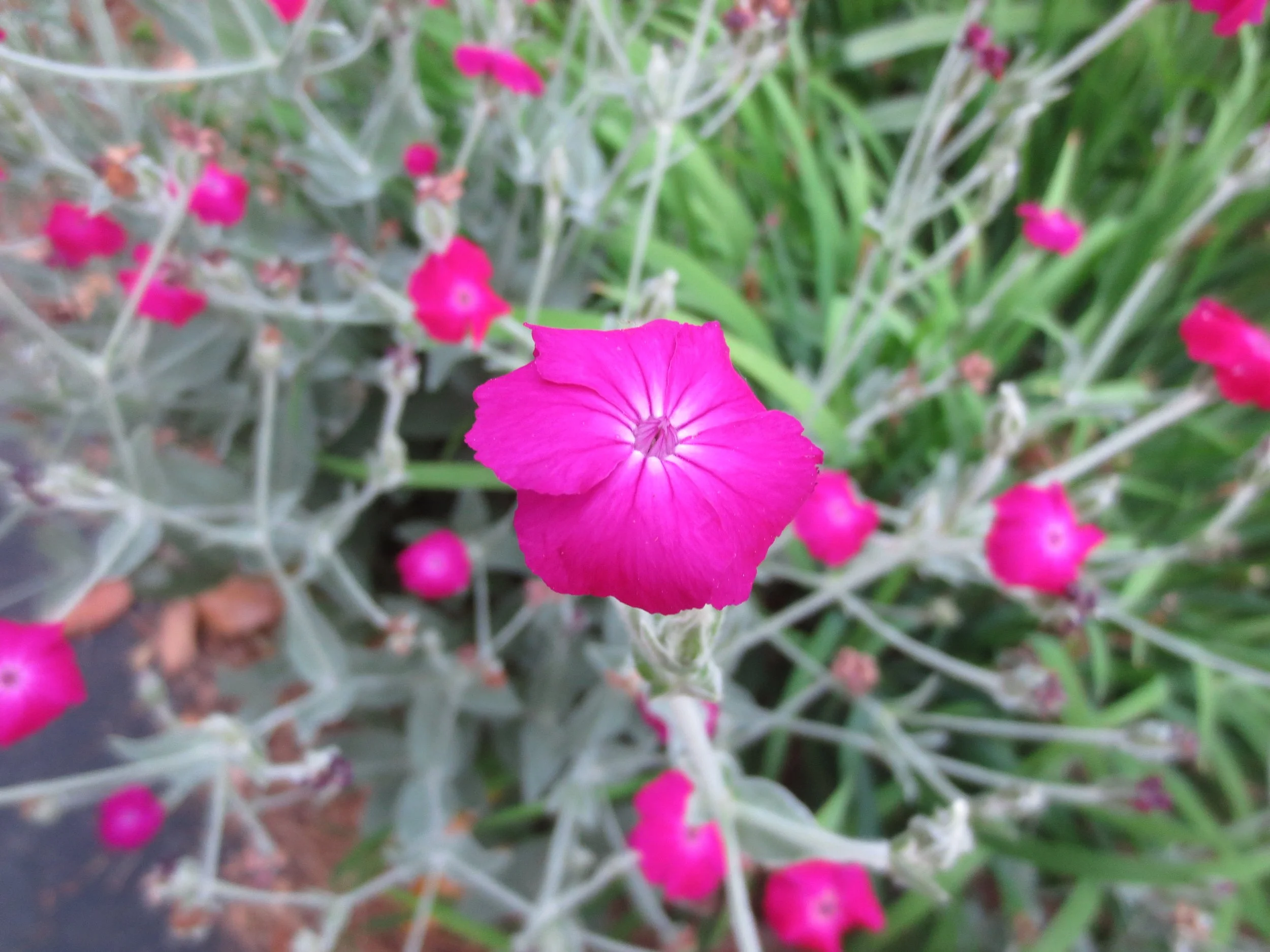Creating beautiful flower gardens is satisfying, but part of me is thrilled when I grow something edible. This is the genetic result of my grandparents’ farming background, I suppose. Two years ago, I spotted a beautiful small tree in the most unlikely of places: the parking lot of a rundown gas/convenience store. The tree was tropical in appearance, but remained evergreen and was even flowering in December. I now know that it was Eriobotrya japonica (pronounced er-ee-oh-boh-TRY-ah jah-PON-ih-kah). The common name is easier to say and spell, Loquat (low-kwaht).
Several times I took a few branch-tip cuttings from that tree, but was never successful with propagating it. Last fall, an unexpected opportunity came my way. I enrolled in a horticulture class at a nearby community college. It was a wonderful learning opportunity, and I enjoyed every minute of the lectures and the walks about campus. One of those walks revealed a beautiful Loquat tree in the protected space between two buildings. Underneath the tree’s canopy stood a single seedling, almost three inches tall. Having secured permission from the instructor, I used a pencil to dig it carefully out of the soil, then wrapped it in a foil wrapper that I had stashed in my pocket after eating a granola bar for lunch. I carefully transported this tiny little gem to my car and to my home. It spent the winter in my greenhouse, safely secured in a 4-inch container of potting soil. Although it didn’t show much top growth, a quick check in early March revealed a pot full of healthy roots. I placed it into a larger container and gave it more love, water, and fertilizer. The plant repaid my attention with rapid growth.
There is a story behind the mother tree. The college instructor, Dr. Kevin Parris, is known worldwide for his research and breeding of Magnolias. On a trip to Asia years ago, he ate Loquat fruit from a roadside stand in China, somewhere near Kunming. He pocketed the seeds. With permission, he brought seeds back to the US. The mature tree on campus was a result of one of the four seeds he sprouted.
A potted, mature Loquat. Photo by Salicyna CC BY-SA 3.0
Mature Loquat fruit. Photo by gailhampshire CC BY 2.0
My garden in located in zone 8a, the coolest part of the possible zones for Loquat. They are only cold-hardy down to ten degrees. I prefer in-ground gardening to containers, but decided to grow my Loquat in a pot that could be transported via hand truck to the greenhouse each winter. A mature Loquat tree can reach up to 25 feet tall, but I plan to prune this one to a “standard” shape (like a lollypop) and keep it to 6 feet or less.
Loquats are not selective about soil structure or acidity. They will grow in full sun or part shade. The small, fragrant white flowers are held in panicles that open in fall or winter. They attract hummingbirds, so I have located the container near my pool deck. Our winter temperatures rarely allow fruit formation outdoors, but I am hopeful that the greenhouse winter home may give me a few. Fruits have a flavor similar to apple but with a softer texture. Another common name is Japanese Plum. Deer do not normally damage this plant.
As an addition to the above information, I wanted to share my planting procedure. For my home’s windy hilltop location, I choose large, glazed containers. The size means they don’t blow over so easily and the glazed surface reduces water loss. A large container, however, takes a lot of potting soil. A friend of mine recently recommended the use of several empty water bottles (with cap on) in the bottom of large containers to reduce the soil need.
Here is the newly potted Loquat, ready to flourish. It is planted on a slight rise to help me wedge a hand truck under it for transport to the greenhouse for overwintering. I’m expecting great things from this little tree!







